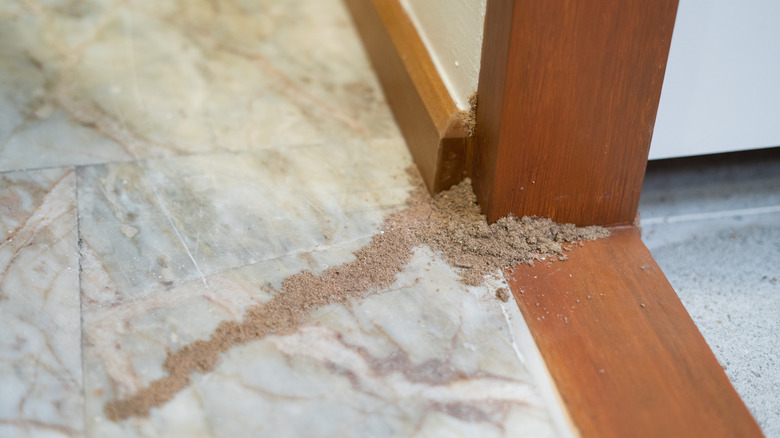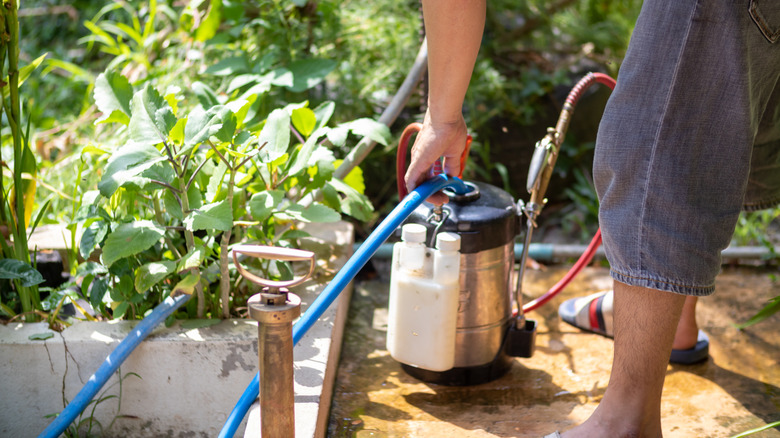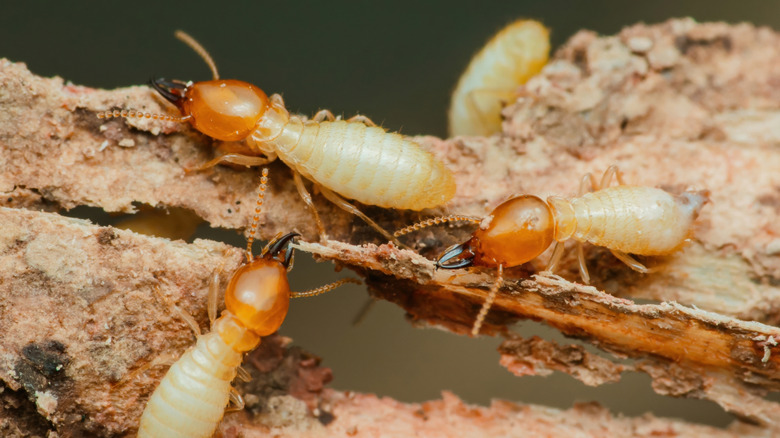Stop Termites From Turning Your Home Into Their Retreat With One Common Solution
Sometimes, it starts with something so small you hardly notice it. Maybe you come across a patch of paint that's bubbling or a piece of wood that sounds strangely hollow when you tap it. Othertimes, a few pencil-thin mud tubes could be seen winding up your foundation. On their own, these details might seem harmless, but together, they're some surefire signs you have a termite infestation. Unfortunately, about 1 in every 5 US citizens will deal with termites in their home. These ever-hungry invaders can chew through solid beams faster than you'd imagine. Termites can be notoriously tricky to get rid of without tenting your whole home, but liquid termiticide is one effective solution that ends the problem at its root.
Termiticide is designed to tackle termites not just where you see them, but where they actually live. Once the solution is applied, it spreads through their tunnels and reaches every corner of the colony. When a termite comes into contact with this solution, it's game over for them. Even those that survive long enough to return to the nest will carry traces of termiticide, which they pass on to their fellow termites. Slowly but surely, the entire colony collapses. It's a thorough defense that keeps termites from ever coming back.
Applying termiticide to get rid of termites
Before anything, throw on your work clothes. This includes a mask, gloves, a shirt with long sleeves, and some eye protection. Some of these treatments can be mildly toxic for humans, so make sure you keep pets and kids out of the way for at least 2 hours. Give your neighbors a heads-up, too, if you live close; no one likes surprise pesticide mist drifting their way. And keep the termiticide well away from any ponds or streams nearby. The goal is to send termites packing, not kill fish.
You'll also need to check and prepare the soil. You don't want to treat the soil while it's frozen or soggy because the termiticide won't sink in properly. Perform a quick test by squeezing a handful of soil from about 6 inches deep. If water drips out, wait for a drier day. When the day comes, dig a trench roughly 6 inches wide and 10 inches deep around your home's foundation. The idea is to give the termiticide a direct path to settle snugly against the foundation.
To mix your termiticide, begin by filling your sprayer tank about a quarter full with water. Then slowly pour in the termiticide so it has the chance to blend evenly, following the package directions. Keep the mixture moving until it looks consistent, then top it off with more water. Once ready, slowly spray the solution into the trench you've created to create a chemical "moat" of sorts. Termiticide works by tampering with the insects' nervous systems, ultimately killing them.
Other simple tips to keep termites out of your home
Termites don't just show up out of nowhere. They're drawn to one thing above all else, and that's moisture. Slow leaks or that soggy patch near your foundation can quickly become a paradise for them, so begin by fixing any leaks around your home. Also make sure that the ground around your home slopes slightly away from the walls. This will help rainwater flow out, making your space less ideal for termite infestation. Further, keeping gutters and downspouts clean is the cherry on top. It's a simple maintenance task that can save you a world of trouble later.
Do consider firewood, too. We all love a cozy bonfire at night, but stacking logs right against your house is basically handing termites an invitation. Ideally, keep logs and other wood sources at least 20 feet away from your walls. If you must keep it closer, store it above ground level. Last but not least, trees or shrubs that brush against your exterior walls are basically bridges for termites. They can look charming for sure, but if you want to get rid of pesky termites, you've got to trim shrubs back so no branches touch your home. The goal is to give your house some breathing room, which will help keep the exterior dry and put pests at bay.


